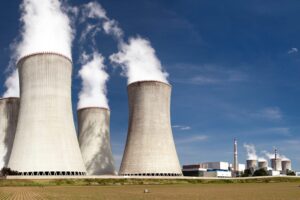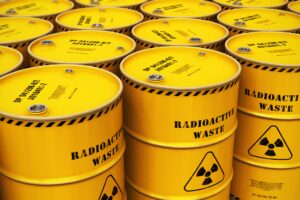Public awareness of clean and sustainable sources of energy has grown significantly, particularly in recent years, as focus sharpens on lessening the impacts of climate change. However, while solar, wind, and hydroelectric power are commonly discussed, nuclear power is often left out of the conversation.
Nuclear power plants are the largest source of emission-free energy in the United States and the second-largest source of emission-free energy in the world. So why is nuclear power generally excluded from the clean energy conversation? One of the main reasons may be misunderstandings about nuclear power—namely that it is not a clean energy source. Below, we highlight three facts that help to answer the question: is nuclear power a clean energy source?
1. Nuclear Power Maintains Air Quality
Unlike other energy sources (e.g., coal, oil, and natural gas), nuclear energy is a zero-emission energy source. It generates power through fission rather than combustion. The process involves the splitting of uranium atoms, which generates and releases heat. The heat generated and released is used to produce steam for turbines, which produce electricity without creating and emitting potentially harmful airborne byproducts (e.g., nitrogen oxide, sulfur dioxide, carbon dioxide, mercury, and dust).
These harmful byproducts, produced in high quantities by power generation operations that utilize coal, oil, and natural gas, can negatively affect human health and the environment. For example:
- Nitrogen oxide can lead to smog.
- Sulfur dioxide can lead to acid rain.
- Carbon dioxide can contribute to climate change.
- Mercury can impact the nervous system.
- Dust and other particulates can cause respiratory illnesses.
Switching from conventional power generation systems to nuclear power generation systems can significantly reduce the amounts of these compounds present in the air, resulting in a cleaner and healthier world.
2. Nuclear Power Has a Smaller Land Footprint
While other carbon-free power options are available (e.g., solar power and wind power), they generally require more land than nuclear power. Compared to any other clean energy sources, nuclear energy produces more electricity on less land space. For example, a 1,000-megawatt nuclear power plant with a single commercial reactor requires a single square mile to operate. In comparison, a solar power plant would require 75 square miles and 3,000,000 solar panels to produce the same amount of electricity, while a wind power plant would require 360 square miles and 430 wind turbines to produce the same amount of electricity.
3. Nuclear Power Generates Minimal Waste
The fuel used in nuclear power generation operations is extremely dense. Compared to the fuels used in traditional power generation operations, it is approximately 1,000,000 times denser, which allows it to take up a smaller amount of space before and after use. For reference, the amount of nuclear fuel waste generated in the United States over the past 60 years could be contained within an area the length and width of a football field with a depth of less than 10 yards.
The nuclear power industry takes full responsibility for all of the waste it produces—both high-level and low-level nuclear energy waste. High-level waste typically refers to used fuel, while low-level fuel typically refers to items exposed to radioactive materials (e.g., gloves and tools). Currently, the standard method for managing both types of nuclear waste is containing and storing the materials in isolated locations until their radioactivity levels have diminished to the point where they can be reintroduced into the environment without causing harm. For some low-level waste, this period is relatively short; it is stored until it is no longer radioactive and then disposed of along with normal trash. However, other low-level waste and high-level waste are slated for essentially permanent storage in designated disposal sites.
Another waste management option is reprocessing and recycling the materials for use in future operations. While the United States currently does not practice this method, advancements in reactor technology could allow nuclear power plants to utilize used fuel, which, if successful, could significantly reduce the amount of used fuel storage space required.
Partner with the Experts at FTC for Your Nuclear Power Needs
Nuclear power is a clean and sustainable source of energy, and organizations across the globe are now incorporating it at higher rates. As a premier provider of californium-252 (Cf-252) neutron sources, Frontier Technology Corporation (FTC) is well-versed in the benefits nuclear power has to offer to the world.
At FTC, our neutron sources find use in a variety of industries and applications. The cores of our business are providing nuclear reactor start-up rods, Cf-252 neutron sources, and shipping containers to customers in a wide variety of industries. To learn more about our products and how we serve the nuclear power industry, reach out to us or request a quote today.


